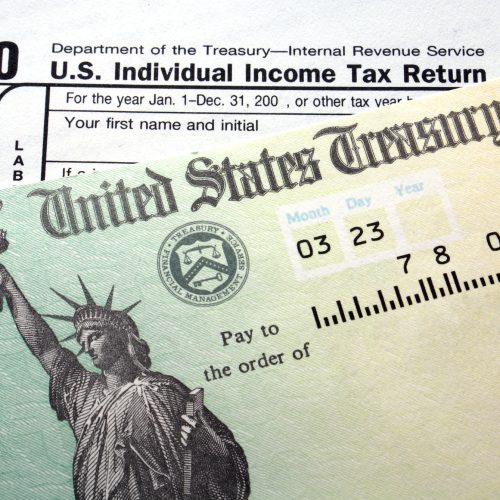Twenty-one days. That’s generally how long you’ll need to wait if you’ve filed your federal income tax return for tax year 2021 and are now asking, “Where’s my refund?”
“Generally,” though, is the all-important caveat here. All things being equal, that’s roughly how long it should take, according to the tax agency — from the time the IRS accepts your return until the refund lands in your bank account. For some people, though, the process won’t be that simple.
Where’s my refund? IRS 2021 tax update
Is anyone else worried that the IRS is just going to make up some B's reason to not process tax returns in a timely manner. #taxrefund #Tax pic.twitter.com/8gGPRxSbbG
— GreenGranny (@sdmccoy4) February 4, 2022
In an update posted to the IRS website just a few days ago, the tax agency reiterated that most people get their refunds in 21 days or less — when, that is, they e-file. And when they also choose to have any refund direct-deposited. Those are two common but super-important conditions that impact the 21-day outcome.
Obviously, refunds coming through the postal service should be expected to take at least that long, and likely longer.
Even more important: The aforementinoed IRS update includes some other caveats that could delay a refund being sent out. For example, if your refund contains errors, is incomplete, or “requires further security review.” And if you thought paper refund checks generally take longer than you’d like them to arrive? The IRS warns that “paper-filed tax returns and paper refund checks will take even longer this year.”
That’s partly because of — what else? — a pandemic-induced backlog of returns, plus short-staffing.
IRS tax tips
Here are some things the IRS says to keep in mind, if you haven’t filed your return yet. If, that is, you want to make sure your refund isn’t delayed.
- For one thing, don’t rush. “People who file before they receive all the proper tax reporting documents risk making a mistake that may lead to processing delays.”
- The IRS is also sending out two letters, one to recipients of the third stimulus check in 2021. And the other letter, to recipients of last year’s child tax credit checks. Make sure the information on those matches what you put on your tax return.
- Some of the other documents you need to have on hand in order to file your return can include a Form W-2 from your employer. As well as a Form 1099-K, 1099-Misc, W-2 or similar income statement if you work in the gig economy.
IRS website

On a slightly related note, in the process of all this you’ll likely find yourself logging into the IRS website at least a couple of times or so.
The IRS said in recent weeks it’s making a huge change to that website later this year. One that involves setting up an account with a third-party provider, which uses facial recognition in the account setup process. After which you can then log into your IRS account as normal.
Needless to say, that coming shift sparked a huge outcry among groups including privacy advocates. And on Monday, the IRS appeared to bow to the criticism. “The IRS announced it will transition away from using a third-party service for facial recognition to help authenticate people creating new online accounts,” the tax agency said. “The transition will occur over the coming weeks in order to prevent larger disruptions to taxpayers during filing season.”
In the meantime, the IRS says it’s working to develop an additional authentication process that doesn’t involve facial recognition.









